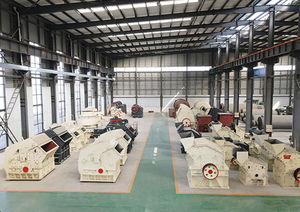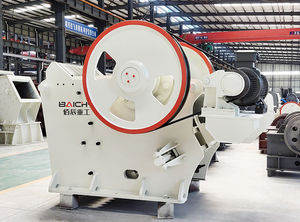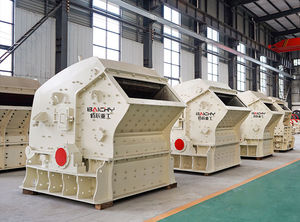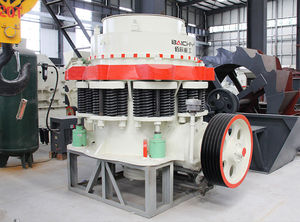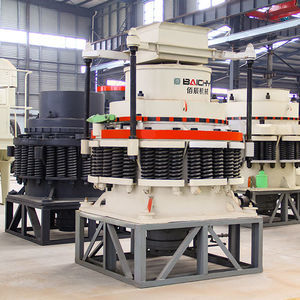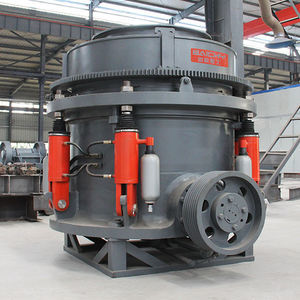
- Building - Construction
- Construction and Mining Equipment
- Hammer crusher
- Henan Baichy Machinery Equipment Co., Ltd
- Products
- Catalogs
- News & Trends
- Exhibitions
Hammer crusher PCZ seriesstationarycoal






Add to favorites
Compare this product
Characteristics
- Technology
- hammer
- Mobility
- stationary
- Other characteristics
- coal
- Capacity
Min.: 50 t/h
(30.6 lb/s)Max.: 800 t/h
(489.9 lb/s)- Motor power
Min.: 55 kW
(74.78 hp)Max.: 315 kW
(428.28 hp)- Opening height
Min.: 800 mm
(31.5 in)Max.: 1,500 mm
(59.1 in)- Opening lenght
Min.: 800 mm
(31.5 in)Max.: 5,000 mm
(196.9 in)
Description
PCZ series heavy hammer crusher is also called huge stone cusher. Because of the alloy composite hammer design, it decrease 35% production cost.
Application
Heavy hammer crusher is widely used for various hard and fragile materials, such as limestone, coal, salt, gypsum, alum, brick and tile, etc. The large capacity makes heavy hammer crusher becomes the preferred equipment in large stone crushing industry.
Applicable materials: Stone crusher is used for crushing over 120 kinds of rocks, such as limestone, granite, quartz, basalt, river stone, gold ore, iron ore, coal, gravel, aggregate etc. Different final output size could meet your different needs.
Reduce the risk of clogging and adhesion with wet and much soil raw materials using no grate design.
Quality Assurance
High capacity and low energy consumption.
Customized Scheme
Lower investment and get profits quickly.
High Yield
Simple structure and easy maintenance.
Working principle
Motor drives the rotor quickly in the crushing cavity. When the materials get into the working area of hammers, the rotating hammers with high rotation speed are crushing them. Without the grate design, wet and much soil raw material will not clogged. Finally, the finished porduct through the outlet smoothly.
Other Henan Baichy Machinery Equipment Co., Ltd products
Stone Crushing Machine
Related Searches
- Crushing plant
- Stationary crushing and screening plant
- Mobile crushing and screening plant
- Impact crushing and screening plant
- Jaw crushing and screening plant
- Primary crushing and screening plant
- Secondary crushing and screening plant
- Compact crushing and screening plant
- Crawler crushing and screening plant
- Cone crushing and screening plant
- Fine crushing and screening plant
- Sand production crushing plant
- Tertiary crushing and screening plant
- Coal crushing plant
- Roller crusher
- Hammer crusher
- VSI crusher
- Hydraulic cone crusher
- Sand washing plant
*Prices are pre-tax. They exclude delivery charges and customs duties and do not include additional charges for installation or activation options. Prices are indicative only and may vary by country, with changes to the cost of raw materials and exchange rates.


